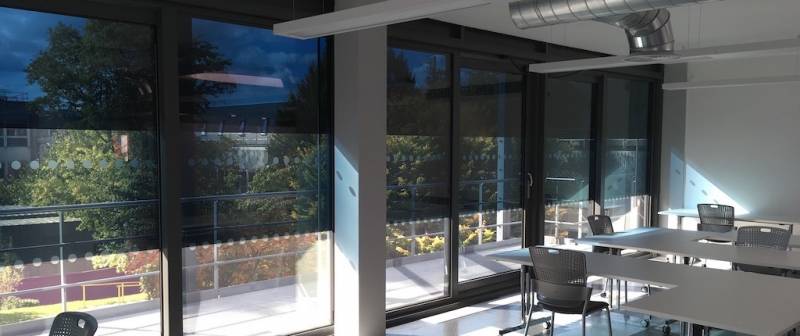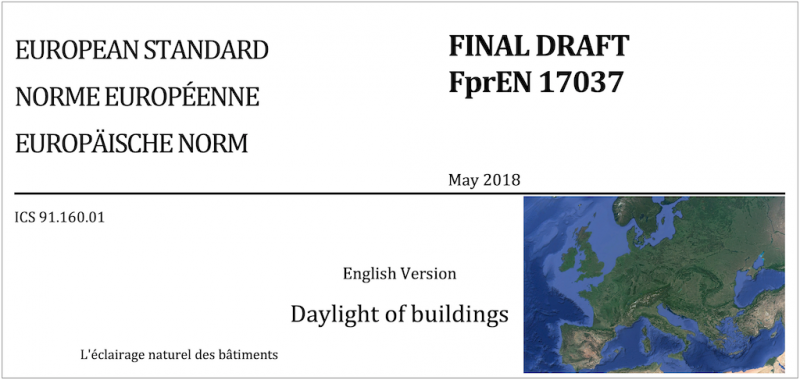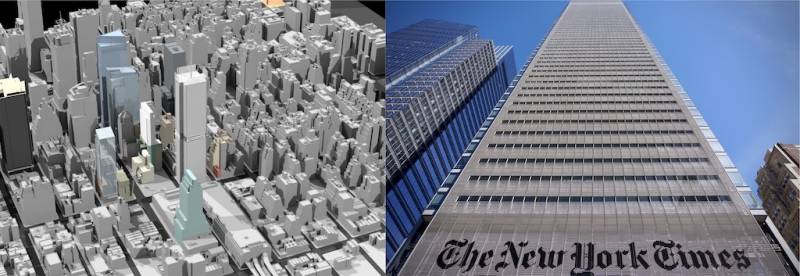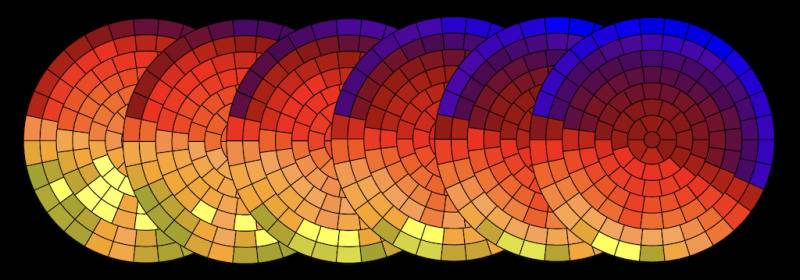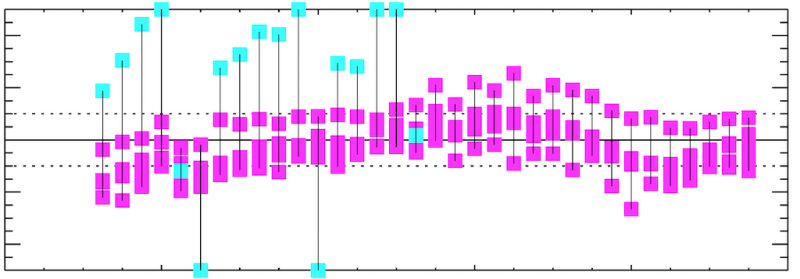Table of Contents
Research + Impact
Impact from research is defined as an effect on, change or benefit to the economy, society, culture, public policy or services, health, the environment or quality of life, beyond academia
Daylighting research carried out by John Mardaljevic since the 1990s has resulted in significant real-world impact across a wide range of application areas from professional practice to international standards. Some of the key ones listed below are outlined in this short video.
Daylight Criteria for UK School Designs
In 2014 the UK Education Funding Agency (EFA) made CBDM a mandatory requirement for the evaluation of designs submitted for the Priority Schools Building Programme (PSBP). School designs submitted to the PSBP must achieve certain 'target' criteria for the useful daylight illuminance metric (proposed by Mardaljevic in 2005). This is believed to be the first major upgrade to mandatory daylight requirements since the introduction of the daylight factor more than half a century ago. The PSBP had a total value of over £10bn. In 2018 the EFA made the CBDM evaluation mandatory for all of its school building programmes.
The UK adoption of CBDM in mandatory codes has led to a market transformation in both the skills base (numbers of CBDM practitioners) and the range of available software (developers responded very quickly to this new market opportunity).
Central Park Tower (New York): Landmark Daylight Injury Evaluation
When completed in 2020, Central Park Tower 1) will become the world's tallest residential building and the second tallest building in the US. Measures of daylight injury predicted by Mardaljevic using climate-based daylight modelling (CBDM) formed part of the legal agreement for the design/development of the tower. This is the only example anywhere in the world where daylight injury predicted using CBDM has played a substantive part in a legal agreement for the development of a building. It may be some time before it is possible to gauge the full impact of this. However, this remarkable precedent is well-known amongst leading rights to light practitioners in the UK and also barristers/QCs who specialise in rights to light.
Daylight Measurement + Modelling for Conservation
With a large number of properties where daylight is the principal source of light for visitors to see the interiors and contents, the National Trust initiated a research programme in 2013 to better understand daylight performance. The programme seeks to bring together the latest in both illuminance capture techniques with climate-based simulation to refine and develop its systems of daylight management.
Simulation is being used to explore the consequence of changes in the opening hours on the patterns of cumulative annual daylight exposure experienced by surfaces in the Smoking Room at Ickworth House in Suffolk. Additionally, High Dynamic Range (HDR) imaging is being used as a means to derive the daylight illumination field (i.e. the light falling onto the surfaces) directly from digital photographs. Thus it becomes possible to measure the light exposure across all the surfaces ‘seen’ by the camera. Deployed in the Smoking Room at Ickworth House this project is believed to be the first use of the HDR technique to measure the long-term light exposure in buildings.
Electrochromic Glazing: Fundamental Design Principles
Variable transmission glazing allows for the dynamic control of daylight - described as the “Holy Grail of the fenestration industry” 2). Many tens of millions of pounds of R&D money has been spent to bring to market a viable variable transmission glazing product. Of the various competing technologies, only electrochromic (EC) glazing appears to have the necessary optical properties (i.e. wide visible transmission range), is relatively straightforward to install, is already in the marketplace, and undergoing the transition to large-scale production.
Two offices in Leicester were the first spaces in the UK to be fitted with production electrochromic glazing in a project set up by Mardaljevic in partnership with SageGlass. A pioneering study carried out in these offices showed how it is essential to operate the glazing so that a neutral daylight illumination spectrum is maintained in the space. SAGE/St. Gobain commissioned a technical White Paper based on this study which is available as a design guide on the SAGE website.
The Architecture Building on Loughborough University campus was refurbished with triple zone SageGlass EC glazing in 2017.
European Daylight Standard
Since 2011 Mardaljevic has served as 'UK Principal Expert' for European Committee for Standardisation CEN/TC 169 WG11 'Daylight in Buildings'. Throughout that time he led both the formulation and the drafting of the daylight part of the standard. In a major break with all previous standards, the methodology (which is normative) bases the targets (which are informative) on the provision of absolute levels of daylight illumination rather than simply relative levels (e.g. 2% daylight factor).
The standard was adopted by the UK in May 2019: “This British Standard is the UK implementation of EN 17037:2018. It supersedes BS 8206‑2:2008, which is withdrawn.” BS EN 17037:2018 Daylight in buildings
Daylighting the New York Times Building
Mardaljevic carried out all of the climate-based daylight modelling (CBDM) for this landmark evaluation. Extensive simulations were used to assist the building owner and manufacturers in making informed decisions on the design and control of an automated roller shade and electric lighting control system for The New York Times Headquarters in the pre- and post-bid phases of the project. A prior monitored field study in a full-scale mockup answered initial questions concerning technical feasibility and performance benefits of automated control. Simulations enabled extension of the monitored field study to the final building in its complex urban context.
In addition to CBDM, Radiance simulations were used for a variety of purposes, from understanding the effects of urban shadow on shade usage to assisting with pre-calibration of photosensor sensitivity in a complex daylit interior environment. Time-lapsed images enabled stakeholders (building owner and manufacturers) to visualize the daylit environment of the final building in its urban context with automated shade control and assess how well visual comfort (direct sun, surface luminance), daylight quality (illuminance level and distribution), and view were to be addressed by the system at different orientations and locations within the building. Inherently, a top-down roller shade compromises daylight when lowered to control direct sun and glare. Simulations were also used to determine whether minor adjustments to the shade control algorithm could increase interior daylight levels without compromising visual comfort.
Annualized, climate-based Radiance simulations were conducted to more thoroughly assess comfort conditions and availability of view. Mardaljevic carried out all of the CBDM work for this landmark daylight evaluation study - 140Gb of generated CBDM data were analysed to derive recommendations for the shade control algorithms. This helped the owner weigh the tradeoffs between number of hours of glare discomfort versus access to view and daylight.
Urban Solar Mapping
The first demonstration of urban irradiation mapping was the San Francisco VRML model ~1999. That pioneering study proved that it was possible to quantify the solar potential in large urban setting, whatever the complexity. It also showed how to link an image-based solution to GIS tools. A decade or so later, solar mapping linked to GIS became a valuable tool to aid the goal of improving urban sustainability.
See also Urban Solar Micro-Climate
Climate-Based Daylight Modelling
Climate-based daylight modelling (CBDM) is the prediction of any luminous quantity (illuminance and/or luminance) using realistic sun and sky conditions derived from standardised climate data. CBDM evaluations are usually carried out for a full year at a time-step of an hour or less in order to capture the daily and seasonal dynamics of natural daylight. Developed in the late 1990s, CBDM steadily gained traction – first in the research community, closely followed by some of the more forward-thinking practitioners. CBDM was pioneered, independently, by John Mardaljevic and Christoph Reinhard (MIT).
The BRE-IDMP dataset was used to validate Mardaljevic's unique daylight coefficient approach - known as the 4 Component Method (4CM). This implementation was shown to have comparable high accuracy to the standard Radiance calculation. Thus the 4CM has been used as a benchmark CBDM implementation against which the predictions from other CBDM formulations (e.g. 2-phase, 3-phase, 5-phase, DAYSIM, etc.) have been evaluated for accuracy.
Validation of the Radiance Lighting Simulation System
The widespread adoption of the Radiance lighting simulation system and, ultimately, CBDM was due in large part to the outcomes from validation studies. What is probably still considered the definitive validation study for any daylight prediction method (physical model, analytical or simulation) was carried out by Prof Mardaljevic in the mid 1990s using data collected by the BRE as part of the International Daylight Measurement Programme (the data are sometimes referred to as the BRE-IDMP validation dataset).
That study showed that illuminances predicted using the Radiance system could be within +-10% of measured values, i.e. within the accuracy limits of the measuring instruments themselves. This, quite remarkable, degree of precision needs to be judged alongside the high level of inaccuracies (often in excess of 100%) that were determined to be fairly typical for physical modelling.




